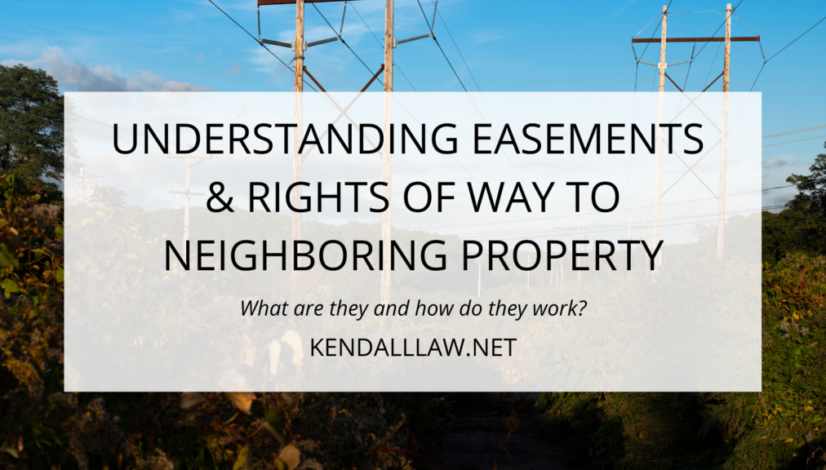Understanding Easements & Rights of Way to Neighboring Property
What is an Easement?
If you have ever owned a piece of property with no access to a road, you likely had a nonpossessory right to use your neighbors’ land to get to the road. In other words — an easement.
An easement allows the holder to the right of use of someone’s land for a specified purpose. Road access is a common easement but there are others. Another example of an easement is the right a municipal corporation has in running a sewer line through a landowner’s land, better known as a right of way.
One is able to convey rights to an easement, just like any other type of property, through deed, will and contract. Moreover, similar to property it can be inherited pursuant to descent and distribution laws of your given state.
Types of Easements
Let’s take a quick look at the different types of easements there are.
An easement appurtenant is a type of easement that attaches to land forever and provides the owner with benefits. The land that is benefited by the easement is known as the dominant estate, whereas the land that is burdened by the easement is known as the servient estate. In the example provided above, the owner of the land that has access to the road would be able to sell the right of way and such access would run with the land of the person who purchases the right of way.
On the other hand, an easement in gross is not attached to any land. In an easement in gross, the rights attach to the owner rather than the land. As an example, if you contract out the removal of something on your property then you can give that person an easement in gross to enter your land and remove items you’ve requested.
Moreover, an easement can either be negative or affirmative. To return to our example above, the holder of the easement to access the road has an affirmative easement. A negative easement is one that keeps someone from enjoying their land in some way – for example one can contract not to build a tall building on their land. In such case they would have a negative easement that does not allow them to enjoy the light and air rights to its full capacity.
How Easements are Created
In regard to their creation, you can create an easement expressly through a contract, will or deed. One can also have an implied easement. This happens when a parcel of land is divided into multiple small parts and there is a sewer running across multiple pieces of land. In such case, the owners of the land would have an implied easement to use the sewer line for their property.
Lastly, you can create an easement through prescription. This happens through the use of the land rather than possession of the land. In order to create an easement by prescription it must be:
1. Open and notorious
2. Adverse to the owner of the land and without their permission
3. Continuous and uninterrupted and;
4. Exists for a timeframe prescribed by statute.
For example, in California the time period required is 5 years. If you have been using your neighbors’ land continuously for 5 years without their permission to gain access to a road then you have an easement by prescription. In order to prove an easement, the standard used in court is that of clear and convincing evidence—requiring the person claiming to easement to prove it.
How Easements are Terminated
There are many ways an easement can be terminated. For example, it can be abandoned. Abandonment does not mean that the easement is no longer in use but rather that there was an intention for it to no longer be in use and in fact it was no longer used. For example, removing the railroad tracks would show that the holder of the easement no longer intends to use the land for railroad transportation. If the easement holder decides to receive another easement that serves the same purpose that can also be relevant to prove intent.
Another way to terminate an easement is through agreement—parties can simply agree to terminate the easement. A merger of the interests can also terminate the easement. For example, the owner of the dominant estate decides to purchase the servient estate.
As you can see there are many ways to create and terminate an easement. If you need any assistance in further understanding how you can create an easement or how to grant access to others to use your land for a specified purpose, please reach out to us and we can assist you further. Contact us at (310) 619-4941 so we can help you take the right steps.
Author: Eileen Kendall





